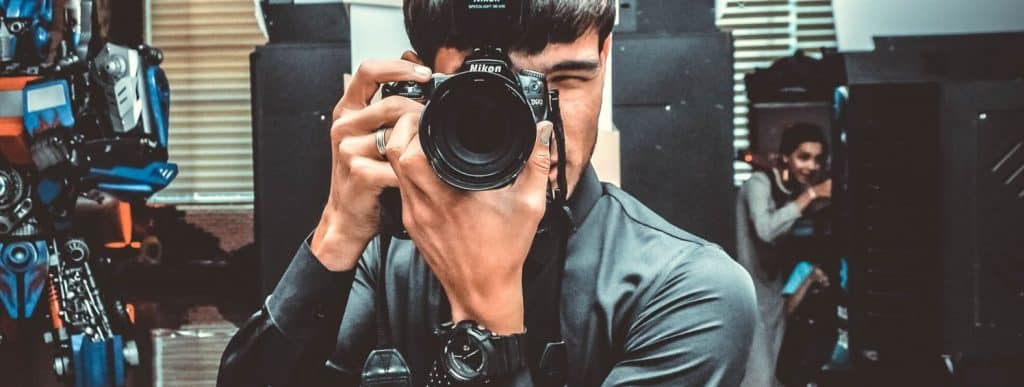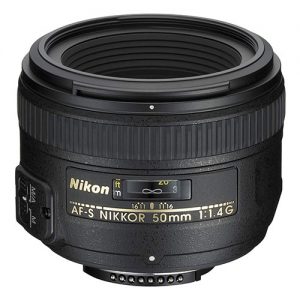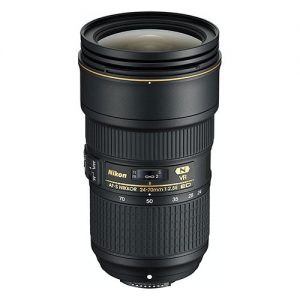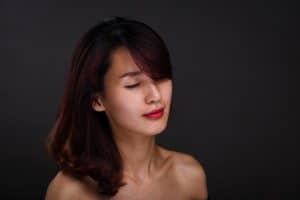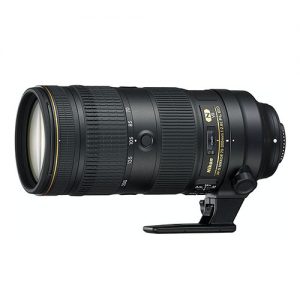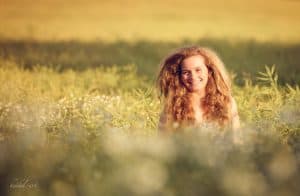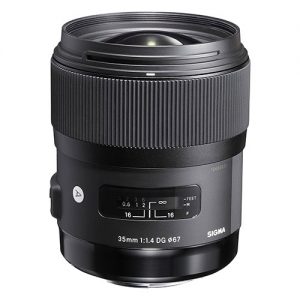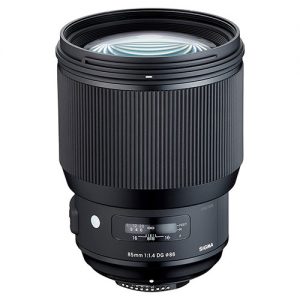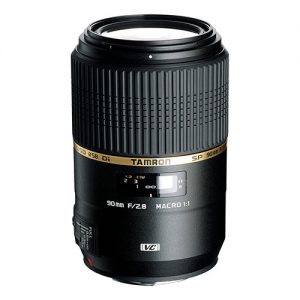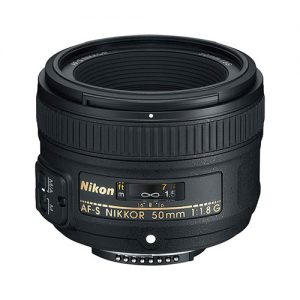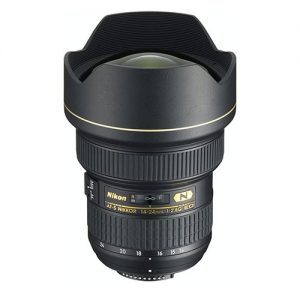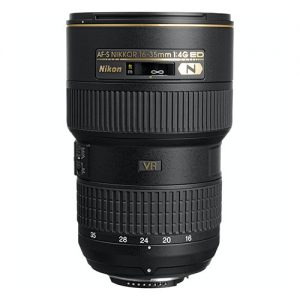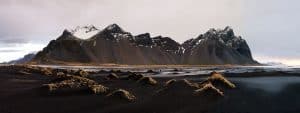Your eye is always going to elevate your photography to a certain creative threshold. However, the lenses you choose to have in your bag will ensure your camera does your eye justice.
I’ve done enough research to come up with an expansive list of Nikon compatible lenses that are great for Portrait photography and would serve as a great lens to upgrade your portrait photography game.
Some of these lenses are expensive, some are just sort of expensive, and one or two are downright cheap.
They all have their uses in professional or amateur portrait photography, and I think they all provide a certain level of niche intrigue that can produce smart, intriguing photos.
I’ve recommended a combination of prime and zoom lenses—I think they both have their use in our industry.
It’s rare to find such a quality 50mm prime lens. However, once you hold this particular NIKKOR 50mm lens in your hands you’ll understand that to get their costs down, Nikon put a lot of plastic into the body of this lens.
That’s not necessarily a bad thing—at the end of the day, if you take care of this lens, it’ll last you a lifetime while being a lightweight lens that’ll barely add any weight to your camera bag.
Pros
- Fast autofocus
- Performs well in low-light
Cons
- Plastic parts can be easier to damage
- Light distortion around the edges in some photos
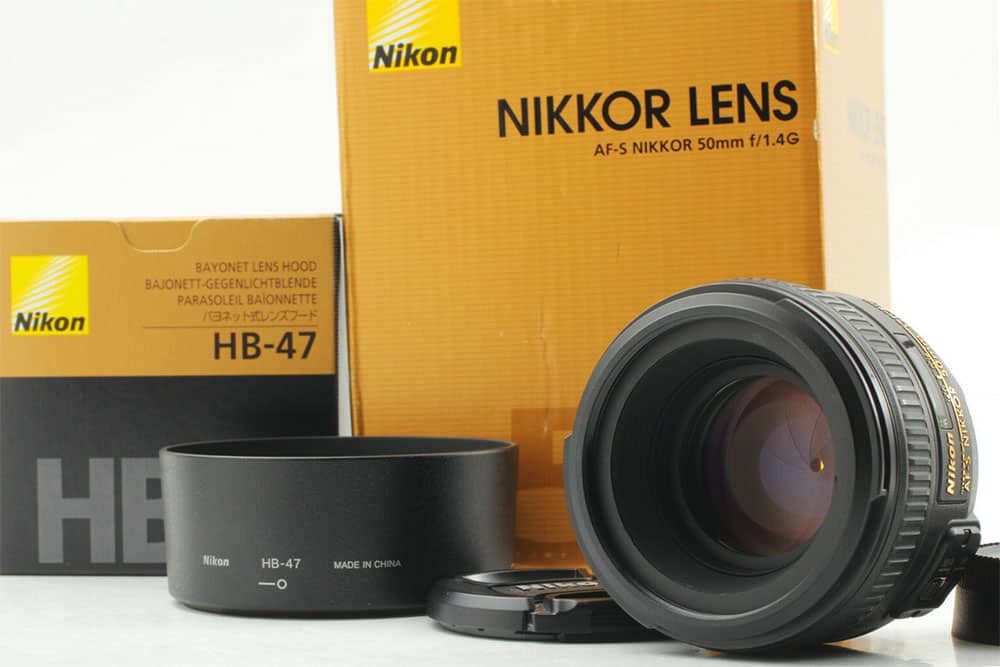
Beyond its build quality, the NIKKOR 50mm lens is a great “jack-of-all-trades” lens that’ll suit portrait photography well and can also be used for almost anything else in a pinch.
For the price, it’s a great lens to have on hand.
- Shot with this lens
To be honest, this is where I see many portrait photographers stop in their search for the perfect portrait lens.
The NIKKOR 24-70mm is a quintessential “zoom” lens with plenty of range.
Think of this lens as a sort of “goldilocks” lens; it’s not quite a wide-angle and it’s not quite a telephoto but it does both well.
It serves as a great lens for staying out of a moment while capturing it spectacularly—it generates those close-up, bokeh-filled shots that many clients ask for.
Pros
- Metal body means extra durability
- Could replace a few lenses, making the upfront cost worth it
Cons
- A little heavy
- The previous model to this lens was much cheaper and, some say, sharper
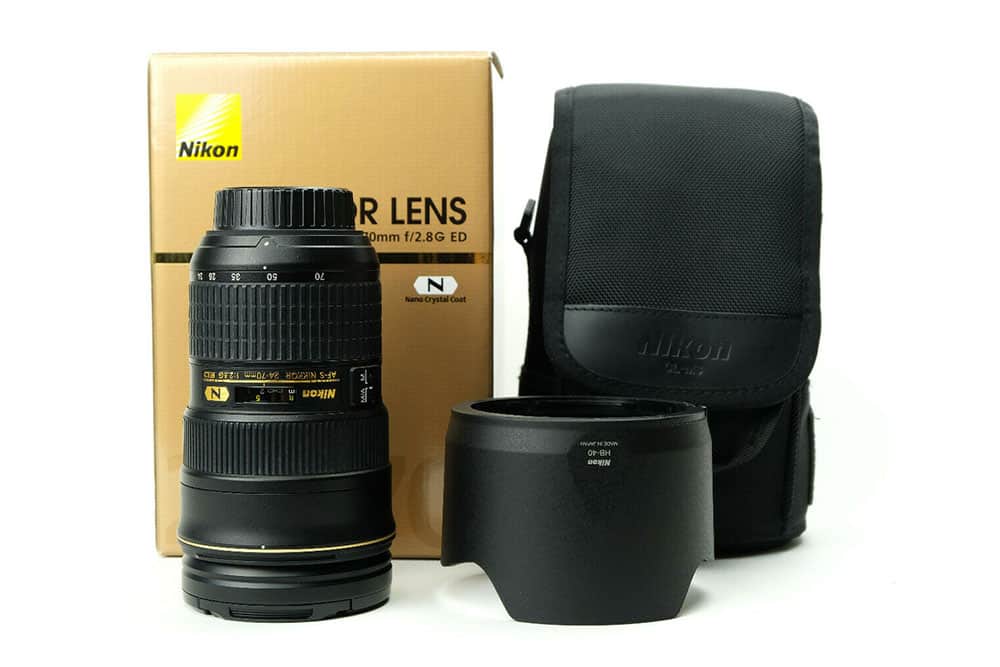
For the price, you better believe that this lens is made out of durable aluminum and features both dust and moisture resistance, so shooting in the elements shouldn’t be as harrowing.
The greatest thing about this lens is how many other lenses it could replace in your bag—it’ll do the work of a landscape lens while carrying its own at a wedding all in a single day.
While it’s expensive, it’s worth the price for many professional photographers looking to break into the portrait industry.
This Nikon 70-200mm lens is one of the newest to be released by the company.
It satisfies the need for a reasonably-priced (for its performance) telephoto lens with some modern features. Nikon touts what they call “focus function buttons”, which act as “auto-dial” buttons for your favorite focal points.
There really isn’t a telephoto lens at this price point that can compete with this lens’s clarity and speed.
With a solid magnesium alloy barrel, the lens feels great in your hands.
Pros
- Focus memory functions make finding your go-to focal points easy
- Produces extremely sharp images
Cons
- Can be considered heavy due to the magnesium allow construction
- You can’t get around the price point, which is high
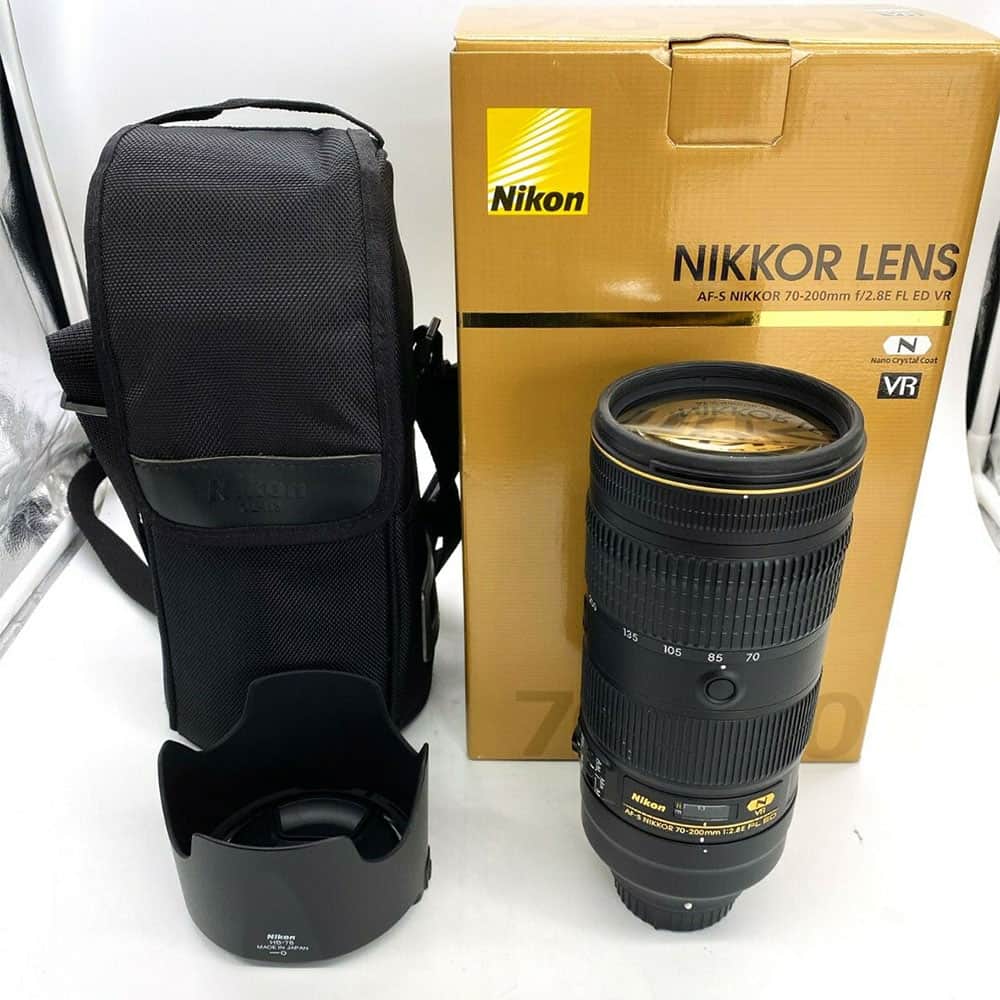
- Shot with this lens
Most of all, the lens simply looks professional—when you bring this out your clients will know you’ve invested wisely in your craft.
A zoom lens of this magnitude is perfect for something like a wedding—it allows you to stay out of the way yet take personal, intimate photos of your subjects.
For many event photographers, this is the only lens they carry!
The line of “art lenses” by Sigma are great pieces of glass across all makes of camera. The Sigma 35mm Art Lens for the Nikon Full Frame series is no exception.
Not only is it significantly cheaper than its Nikon equivalent, but it’s full of the dependability you can rely on these days from a reputable manufacturer like Sigma.
Pros
- More than half as expensive as the Nikon equivalent
- Has a lower f-stop than the Nikon 35mm
Cons
- Third-party lenses don’t seamlessly integrate with the Nikon “experience” like a Nikon lens would
- For its length, this lens is heavy at 2 pounds
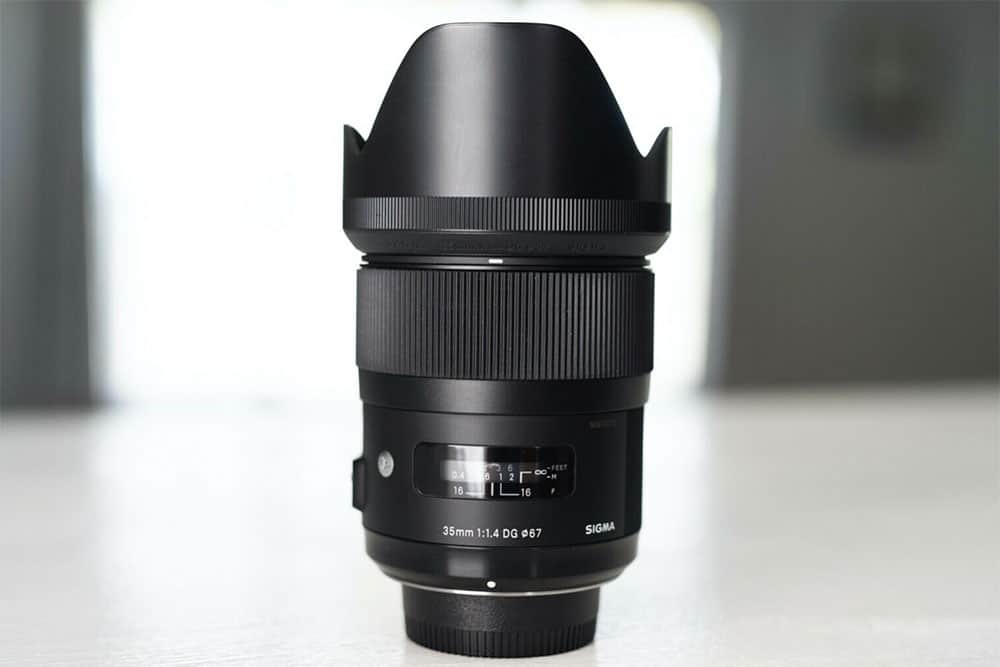
And while the Sigma is cheaper, it also performs at a lower f-stop than the Nikon 35mm (1.4 vs 1.8), which I always prefer. However, 35mm can be a strange focal point for portrait photography, right?
I like to use a 35mm for street photography or what some people call “environmental portraiture“.
It’ll get your subject and their environment in the frame and then some.
I wouldn’t use this lens for straight portraiture, as it will distort their proportions. However, for “snapshot” portraits this is a great and inexpensive lens to take with you.
Sigma makes this lens for Canon, Nikon, and Sony, so the lens itself has a certain sense of universality that may throw you off when you first use it.
One thing I’d recommend everyone do is to load up Sigma’s calibration software and calibrate their lens before they use it. With that said, it’s a fast, sharp, and beats most other 35mm in performance and price.
Since we’re talking about Sigma Art Lens, their 85mm lens is a great conventional portrait lens to have on you.
Thanks to its ideal focal point and low f/stop you can easily make your subject stand out while making their backdrop delightfully blurry, almost creamy in its consistency!
Pros
- 85mm is a great place to shoot portraits
- The Art Lens series is relatively inexpensive for what you get
Cons
- Heavy and bulky
- Like many Sigma lenses, ensure you calibrate it before using
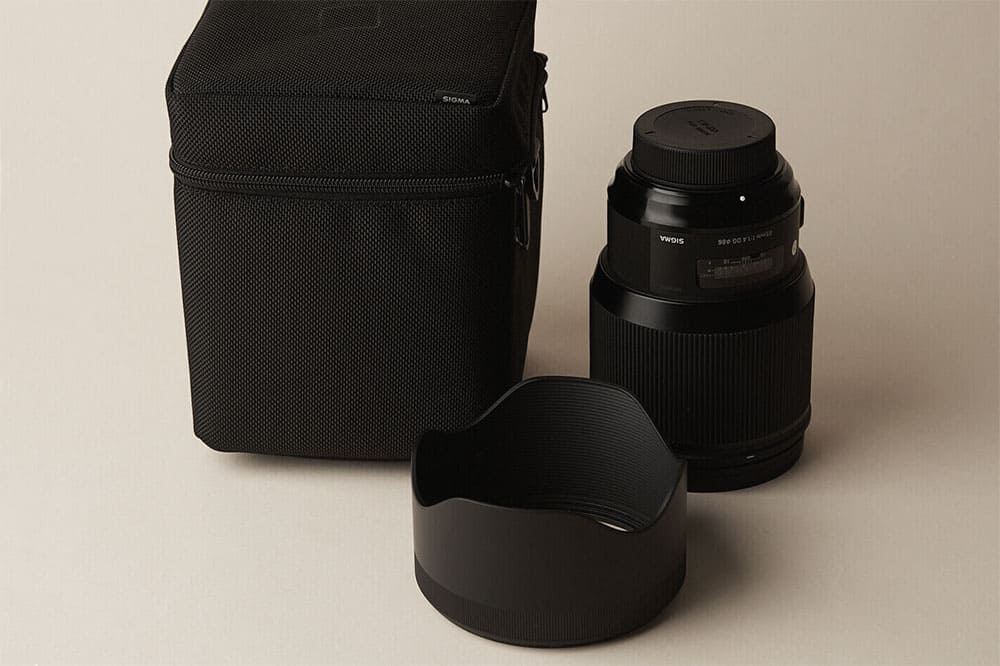
The lens is heavy and large but could be worth keeping in your bag.
As a prime lens what it lacks in zoom it makes up in perfectly shooting at 85mm. It’s a popular lens for portrait photographers for a reason and I suspect it’ll continue to be.
Call it a macro lens or call it a “portrait macro lens”. This type of prime lens is used more often than you’d think for stunning portrait photography.
A good portrait photographer makes sure the devil is in the details and this lens will certainly capture them!
Pros
- Offers itself as a great macro lens and an interesting portrait lens option
- 90mm is an unconventional but useful focal point for portrait photography
Cons
- There is a lack of overall versatility in a 90mm prime lens
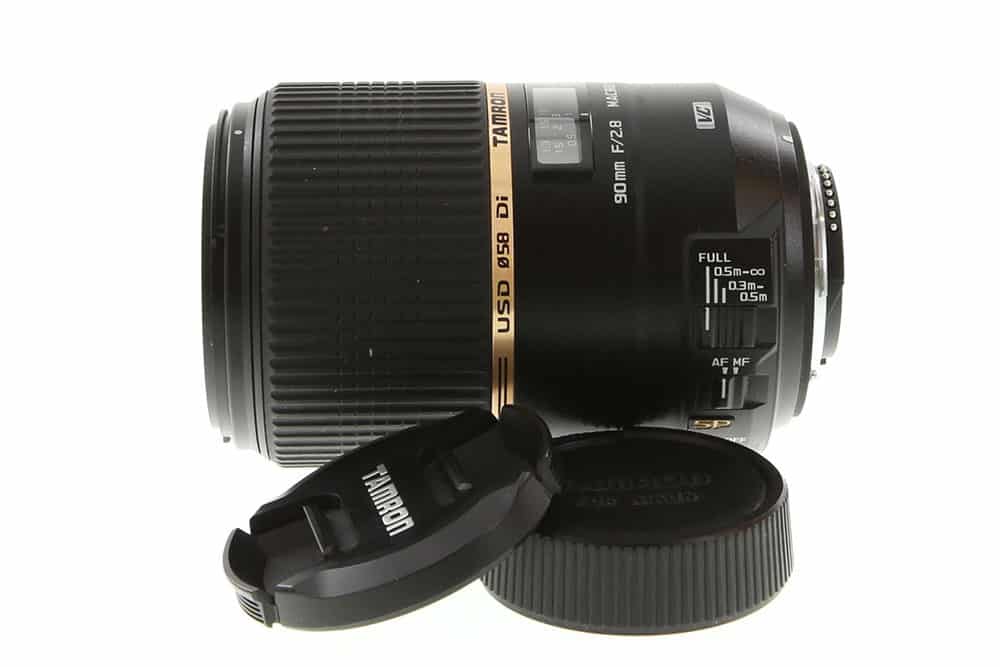
While not as pervasive as Sigma, Tamron is a respectable manufacturer whose lenses often hit that sweet budgetary middle ground.
90mm is an often overlooked dimension in portrait photography. Having this lens in your bag could help you establish a style that sets you apart from the pack.
Moreover, since it is a macro lens you can also get in extremely close thereby bringing even more intrigue into your photography.
50mm is a great starting point for any budding photographer, whether you’re getting into doing portraits or otherwise.
However, not all 50mm lenses are alike. While the f/1.8 50mm Nikon lens can be beaten by others like it, you can’t beat the price of this lens, especially when comparing its overall performance and versatility.
Pros
- An extremely inexpensive and high performing lens
- Fast and sharp especially for the price
Cons
- The f/1.8 by Nikon handles better, especially in low light
- Made of plastic and can feel light
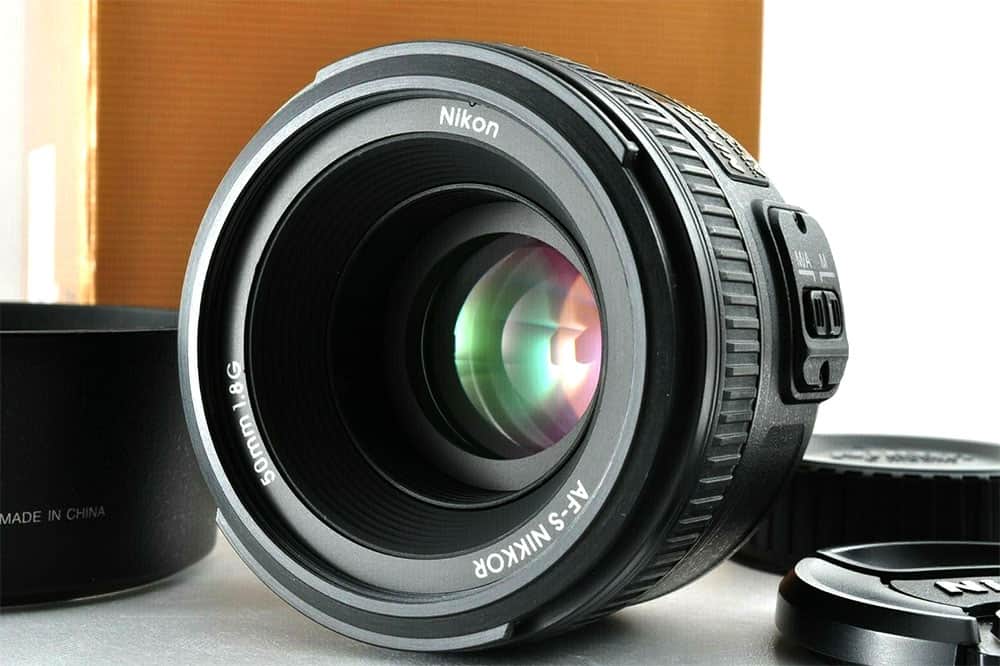
While an f-stop of 1.8 isn’t the best for natural light, you can certainly make due considering the great price difference between this 50mm and the f/1.4 50mm by Nikon.
This is the kind of lens you buy when on a budget—something you want to quickly replace your stock lens with. With that said, it’s still an impressive lens and one you may keep in your bag years down the road even if just for nostalgia.
This is a wide-angle lens, which isn’t typically helpful to portrait photography but hear me out!
If you require a solid wide-angle “zoom” lens that’ll satisfy your needs for fast and wide street portraiture and even function in a studio portrait session, then this lens is a great option.
There is a reason this lens, now well over 10 years old, is still a top pick in the photography industry.
Pros
- Unheralded build quality and performance
- Serves as a great wide-angle lens with a little more zoom than is typical
Cons
- The upfront cost of the lens is high
- The lens has no vibration reduction
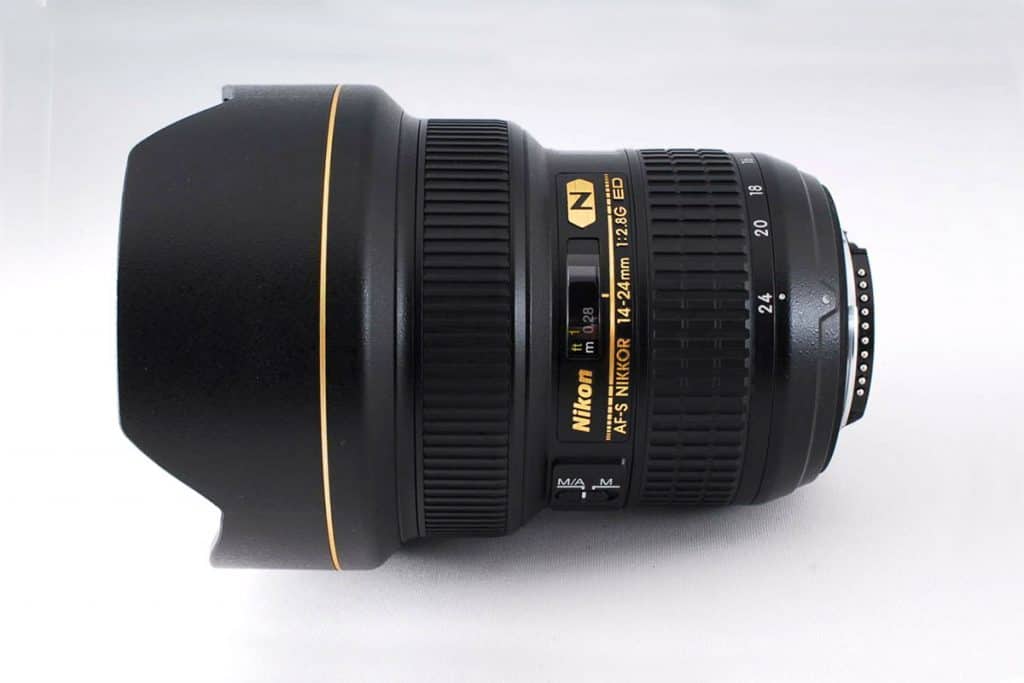
Like the 24-70mm lens that I previously mentioned, the 14-24mm lens hits a certain sweet spot that many photographers look for when shooting.
In fact, it hits enough sweet spots to replace multiple lenses that do less of a job across one focal length than this 14-24mm does across multiple.
This lens is more of a wide-angle than a zoom but still performs sharply as either.
While there are cheaper alternatives to this lens, nothing can quite match the durability and performance of Nikon’s tried-and-true 14-24mm lens.
Yes, there are other, faster wide-angle lenses on the market—even faster lenses close to this focal length made by Nikon.
However, I feel that this particular lens, due to its price, is the more viable option when you compare its competition.
It tends to cover a larger focal length than other equivalent lenses and it’s also much lighter than most other wide-angles of this range.
Beyond that, this particular model comes with vibration reduction, which helps to mitigate its slower f-stop.
Pros
- Lighter, cheaper, and more versatile than most other wide-angles of this range
- Comes standard with vibration reduction
Cons
- Low-light performance will suffer due to its higher f/stop
- There are faster lenses out there, for a higher price
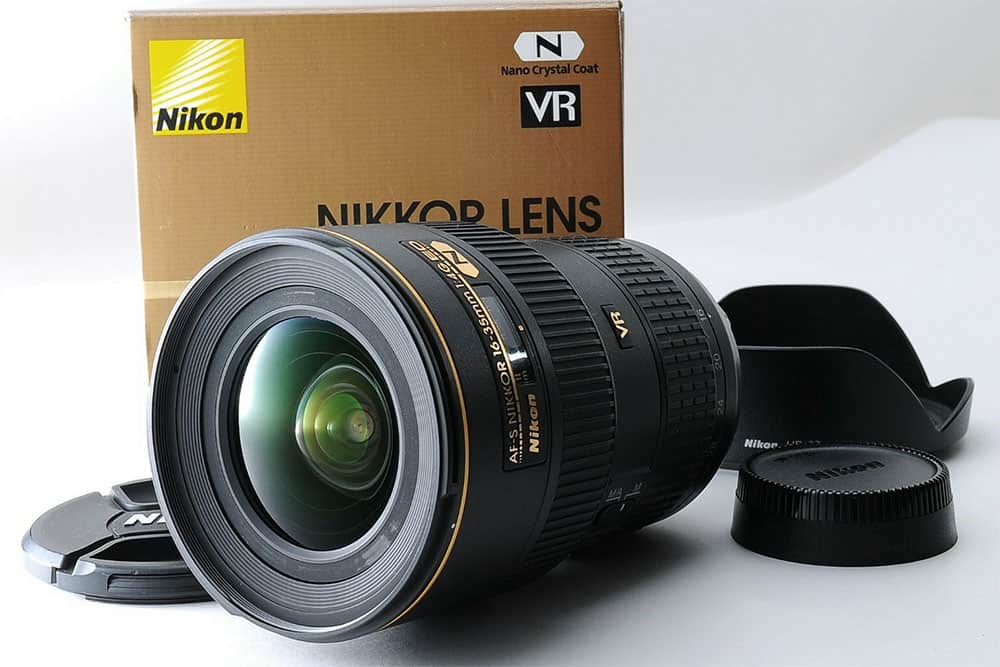
While this lens may be slower than other wide-angle lenses, it’s important to remember how you’re shooting with this lens.
I doubt you’ll be shooting too often in low light at such a wide-angle.
With that said, it’s those kinds of variables to think of when choosing a lens. Its specs on paper don’t always mean much until they are put into practice!
The Nikon FX Portait Photographer's guide
Thanks to the Internet, it’s easy to get lost in the details of photography and forget to understand the basics.
When all information is available to you, you sometimes lose sight of the beginning, middle, and end of your learnings. I’d like to address some basic questions below that should help you make an informed lens buying decision. You can trust my advice in this article at face-value (I’ve done my research) but I’d also like you to understand why I’m making the recommendations that I am making.
What Considerations Should I Make When Choosing a Portrait Photography Lens?
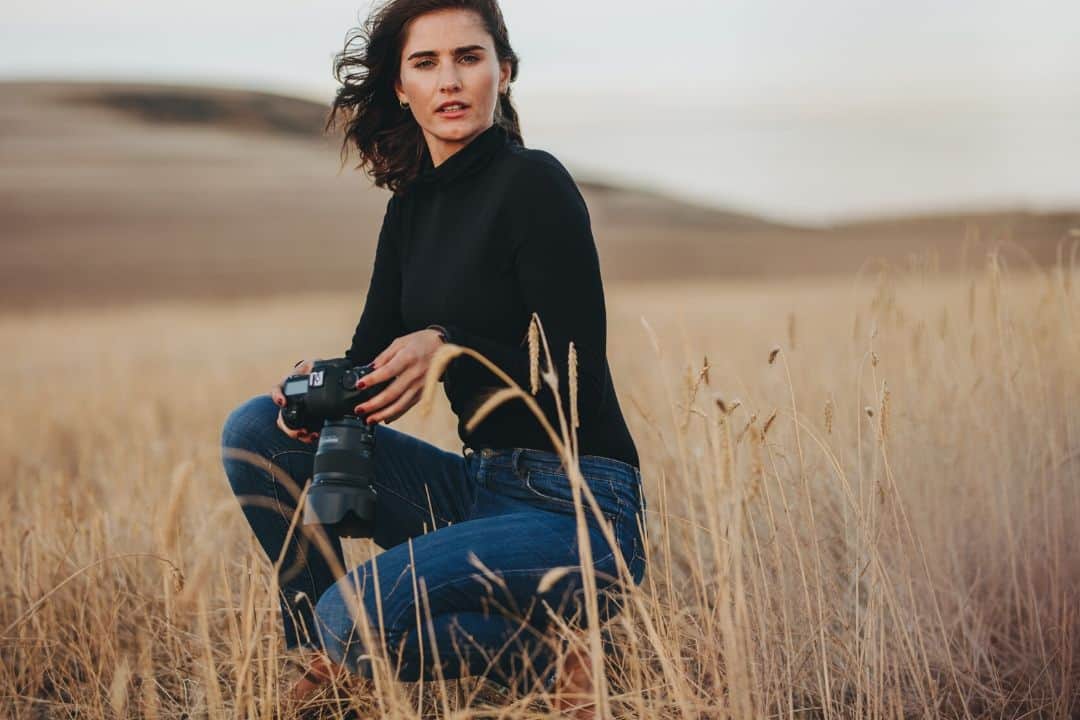
There are a few key considerations you should make when buying a new lens for portrait photography. The most expensive is never the best option.
There’s so much more that goes into your decision. And, with these fundamentals under your belt, you should be on your way to identifying the best lens for your needs regardless of the price.
Low Light Performance
the lower the f/stop of your lens, the better it’ll handle low-light situations (but the more expensive the lens will be). It’s important to consider low-light performance when choosing a lens. The last thing you want is to get stuck with blurry or noisy photos because your lens wasn’t up to the task of taking a photo in a dim environment.
Weight
Every item you carry as a photographer adds up and it adds up fast.
It’s easy to forget how heavy a lens is until you have three of them, a camera body, a tripod, and a few other add-ons in your bag while you hike to a shooting spot.
However, heavier lenses tend to be made up of more durable stuff. It’s important to find a balance.
Price
It might seem obvious that you’d need to consider price before buying a lens. However, as a professional portrait photographer, you really need to consider it. Is this a lens that’ll last you a lifetime? How many other lenses could it replace?
If a lens stands to be a workhorse in your toolkit, then it stands to reason to spend a little extra money on it.
However, if the return on your investment is too narrow then you may want to rethink things.
Focal Length
As a portrait photographer focal length is incredibly important to you. However, there’s no easy answer as to which is the best one. As you learn the craft, you’ll gain an appreciation for which focal length is best for a given situation. Furthermore, you’ll consider that intuition when making a new lens purchase. Are you constantly finding yourself shooting from a distance?
Then it stands to reason that you should look at a great telephoto lens.
Are you all over the place?
Constantly moving? Then a more versatile lens is in your future.
Should I Use Autofocus?
Many photographers scoff at autofocus.
However, with faster and faster lenses it’s becoming more commonplace to let that feature do its thing.
Manual focus can be a great resource for zoom lenses, which tend to have trouble finding their focus due to their intense focal length, but for anything shorter than a zoom lens I would say keep it in autofocus and manually tweak the camera settings from there.
Let your camera work for you when it can.
Out of All the Lenses Listed, which is the Best One to Start with?
Anytime a budding photographer asks me this question I ask them how much money they have to spend.
The truth is, if you buy the pricier lenses now, you’ll still be using them 10 years later.
However, some of the cheaper options might slowly fade from constant use as you get better and better lenses.
But if I were to pick two lenses for a beginner to choose from I would go with the 50mm from Nikon or if you have the money, splurge on the 85mm Art Lens from Sigma.
Both lenses are great “normal” lenses that’ll give your photographs that professional sharpness a stock lens won’t.
I’ve even seen many professionals still bringing out these lenses even if they’re probably the two cheapest lenses in their camera bag.
In my opinion, the Sigma 85mm Art Lens, though much more expensive, is one of those upfront investments that payout in spades.
Beyond that, it’s the kind of lens you’ll be able to use in any situation.
Should I Shoot in RAW?
The short answer is yes. Invest in a few SD cards for your camera, switch it over to RAW, and never look back.
The longer answer is that RAW format gives you the versatility to fine-tune your photographs in post-production naturally and uncompromisingly.
If you shoot in any format, even if it touts itself as high resolution there will be some compression.
Most of all, losing RAW means you lose precious color balancing and exposure data that you can tweak later as if you hadn’t yet taken the photo.
Also see this excellent post about shooting raw on nikon USA.
What is a Prime Lens? What is a Zoom Lens?
It’s easy to define these two types of lens, however, you’ll be opening a can of worms trying to compare them. To put it simply, a prime lens is a lens set at a fixed focal point. Think of a 50mm or a 35mm lens. They don’t zoom in or out—they’re stuck at that one point.
Zoom lenses, on the other hand, serve a range of focal points.
I always distill the argument between the two like this: a good prime lens does one thing really well; a great zoom lens does a bunch of things really well.
Do your research—a high performing zoom lens can outperform a great prime lens, given certain parameters.
Do I need a Lens Hood?
Lens hoods are another hot button topic in the portrait photography community. A lens hood is meant to affix itself to your lens, extending beyond the tip of the lens to act as a hood as a means to block out unwanted excessive light.
Too much direct sunlight can create unwanted lens flares in your shots—a lens hood is meant to mitigate that effect.
However, whether or not a lens hood actually negates the effects of intense sunlight is up for debate.
But one thing that it does do well is protect your precious lens should it be dropped.
What would you rather damage, a $15 lens hood or a $1,000+ camera lens?
Should I Use a Tripod?
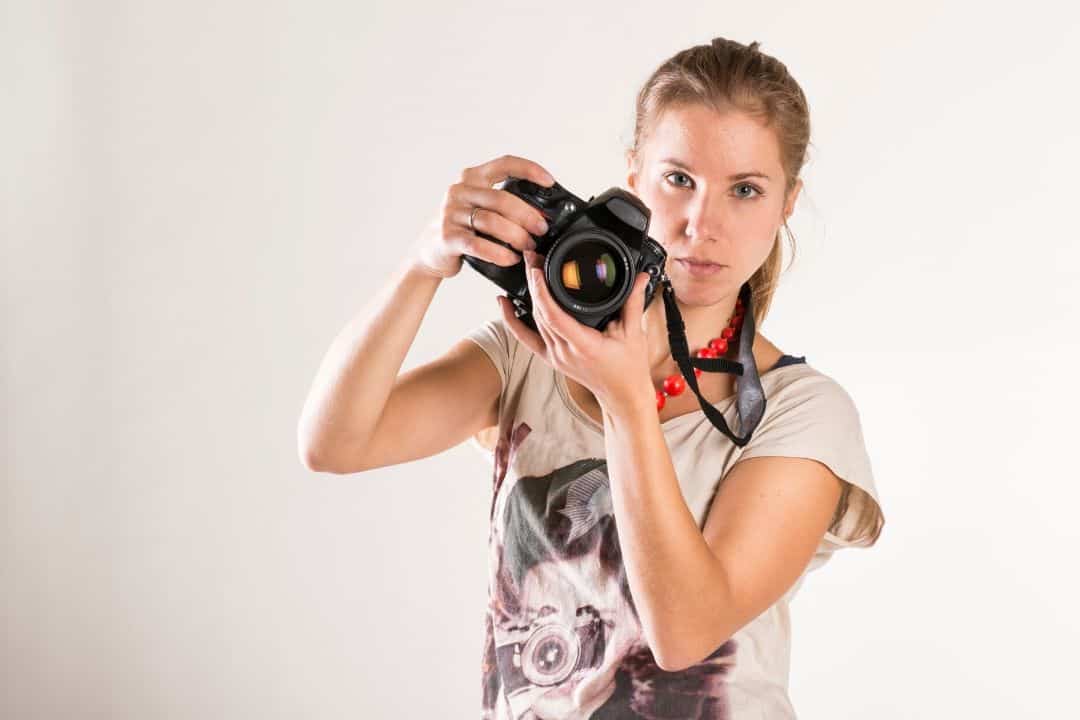
Photography, in essence, is about capturing a moment. That moment doesn’t always have to be sharply in focus.
On the contrary—some photographers don’t want their subjects to be seen with total clarity.
A tripod, like all of your gear, is entirely optional.
However, to get crisp, sharp photos you need to let your camera take in as much light as it needs to bring those details into focus.
The problem is that the more light you need, the longer your shutter is open, and the blurrier your photographs become if the camera isn’t steady.
A tripod alleviates that problem by keeping your camera perfectly still while it takes all the time it needs to take a good photo. For this reason, I think a tripod is essential but not always necessary.
For instance, shooting a wedding at noon on a cloudless day means you probably do not need that tripod.
However, as the sun goes down and golden hour begins you’ll be sorry if you left it at home.
All in all, a tripod is just another tool—your intuition will tell you when you need it but you’ll hate not having it when the need arises!
List of FX (Full Frame) Nikon Cameras
For reference, the following Nikon cameras are full frame, using the FX mount natively:
- Nikon D780: 2020 January 06
- Nikon Z6 and Nikon Z7: 2018 August 30
- Nikon D850: 2017 August 24
- Nikon D5: 2016 January 05
- Nikon D750: 2014 September 12
- Nikon D810: 2014 June 26
- Nikon D4S: 2014 January 07
- Nikon Df: 2013 November 05
- Nikon D610: 2013 October 08
- Nikon D600: 2012 September 13
- Nikon D800 and Nikon D800E: 2012 February 07
- Nikon D4: 2012 January 06
- Nikon D3S: 2009 October 14
- Nikon D3X: 2008 December 01
- Nikon D700: 2008 July 01
- Nikon D3: 2007 August 23
Conclusion
If Your Camera is the Luxury Car, Don’t Cheap Out on the Tires
What is your go-to lens for portrait photography? I’m always interested in what other photographers have to say.
After all, lenses and photography are not binary concepts—there is plenty of room for discussion. Beyond that, I am also positive I missed out on listing some great lenses—these are just my favorites.
Let me know what you think about the list and I’d love some feedback.

